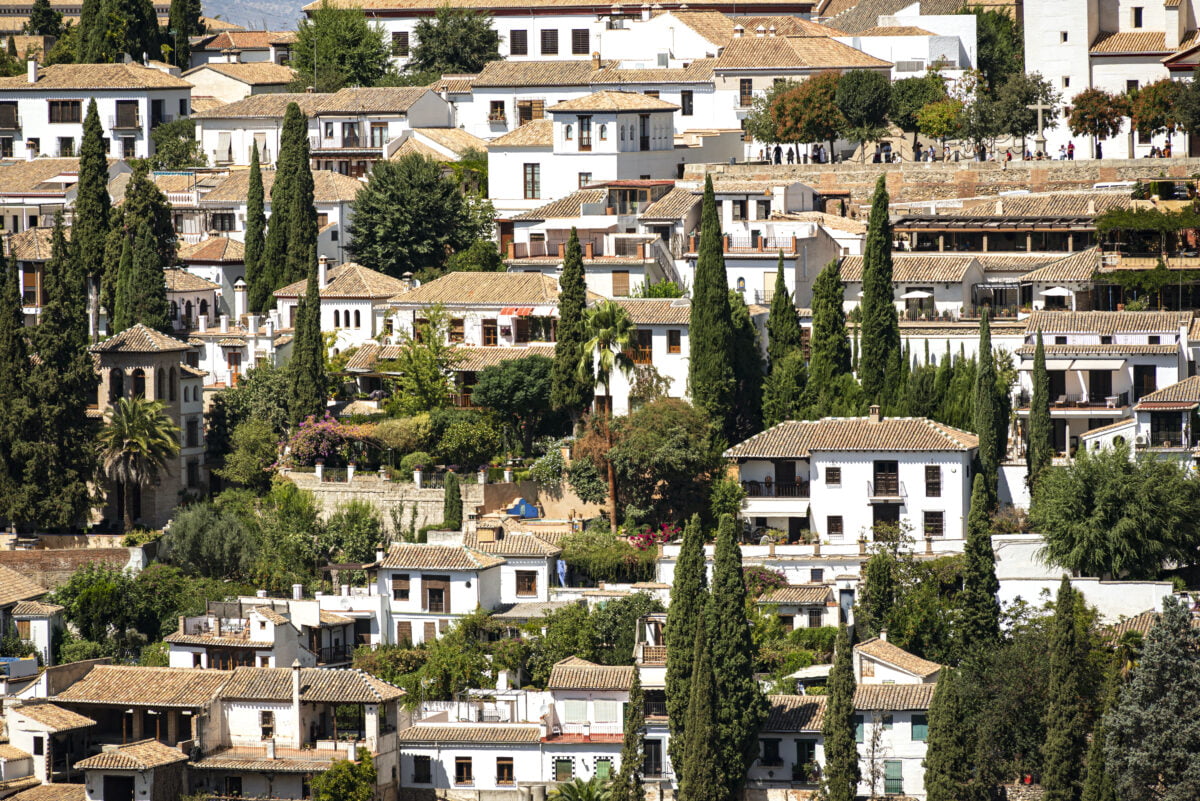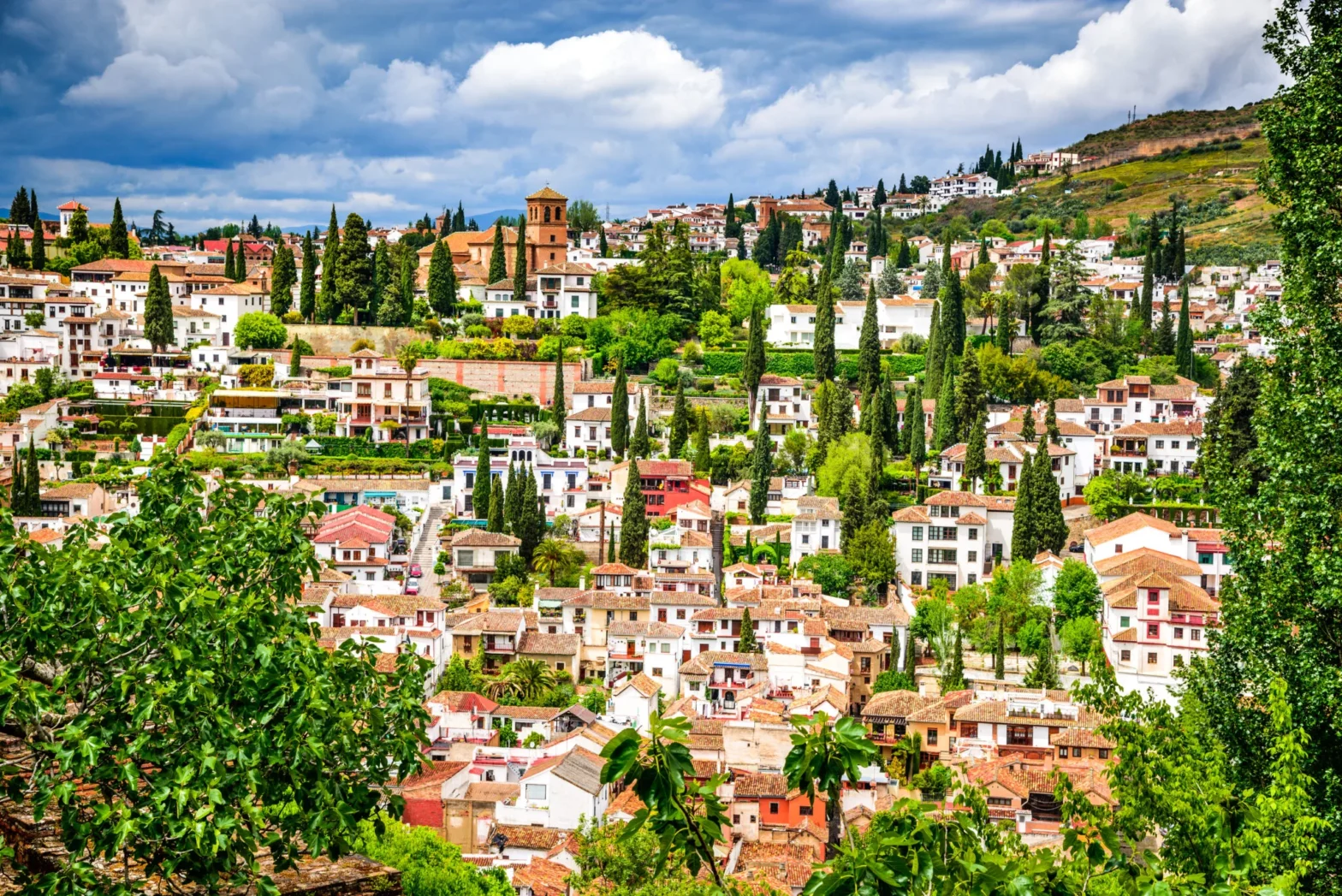Let’s dive into the backstreets of Albaicín, Granada’s oldest neighbourhood, where history whispers from around the corner and the echoes of old Spain resound at every turn. From its Iberian roots to its Arab heyday to the present day, join us for a journey through Albaicín, where the past lives alongside the present.
Arab origins of Albaicín
The roots of Albaicín are steeped in the darkness of history, when the area was settled by the ancient Iberians. However, it was during Arab rule, from the eighth to the fifteenth century, that the district gained its unique character. At that time, Albaicín was an independent kingdom which, over the years – first under the influence of the Ummayads and later the Nasrids – evolved into a place full of majestic palaces and mosques.
The mysteriousness and charm of Albaicín is reflected even in its name, which, like many in the district, has its roots in the Arabic al-Bayyāzīn. Two main tropes lead us to the history and culture of the place. One of them deserves the title of a true novel: about refugees from the city of Baeza, known to the Romans as ‘Beatia’, who found refuge here. According to it, the name al-Bayyāzīn is a reference to these newcomers from Nasrid times.
An alternative theory has an air of ancient glamour about it: it indicates that the name comes from rabaḍ al-Bayyazīn, which translated means ‘suburb of the falconers’. And this may sound a bit exotic, it is worth remembering that falconry was a popular form of entertainment during Arab rule in Spain, and similar names can also be found in the history of other cities.
Even after the end of Muslim rule, Albaicín retained its unique identity. In 1492, when Granada came under Christian Spanish rule as a result of the Reconquista, the Muslim part of the community was under temporary protection, but over time most of the mosques were converted into churches and the population itself was attempted to be converted to Christianity. Although the Reconquista brought with it changes to the social and urban structure, it was unable to erase the deep-rooted Arab history in Granada.
In the 16th century, Grenada was the scene of a revolt by the Moriscos – Muslims forced to convert to Christianity – and the Albaicín district was their main bastion. After their expulsion, the neighbourhood gradually fell into oblivion, gaining a reputation as a neglected and dangerous place. In the twentieth century, the authorities decided to restore the Albaicín to its splendour and restoration work was undertaken to restore the historic district to its former glory. In 1984, Albaicín was declared a UNESCO World Heritage Site, further confirming its unique character and historical importance.

Unique architecture
The architecture of Albaicín is a perfect example of the Christian and Muslim influences that harmoniously intertwine to create a unique image of the district. The white houses, pleasing to the eye with their simplicity and elegance, are decorated with numerous details that catch the eye. Each tells its own story, reflecting the mix of cultural influences that have always characterised Granada.
Particularly distinctive are the beautiful ceramic tiles known as azulejos. They can be found almost everywhere – on floors, walls and even ceilings. The rich designs and colours of azulejos are a symbol of the Moorish heritage that has become an integral part of Andalusian culture.
The cobbled streets of the Albaicín lead through a labyrinth of white houses, among which are true hidden treasures – the Cármenes, or stately white residences with private gardens full of flowers, fountains and fruit trees, surrounded by high walls. They are micro-worlds where life takes place in the shade of pomegranate trees, surrounded by the scent of jasmine.
Not to be forgotten are the imposing church towers that were once, as minarets, part of the mosques. The change of their function to church bell towers is a perfect example of the gradual takeover of Arab architecture by Christians after the Reconquista. The towers are an integral part of the Albaicín skyline, adding to its distinctive charm.
During the seventeenth and eighteenth centuries, the architecture of the houses in Albaicín underwent a metamorphosis. Following the trends of the era, the previous layout of spaces was changed – the ground floor, once the heart of the house and a place full of luxuries, began to give way to the ground floor. The upper floor became an arena for decoration and prestige – a place where elegance met everyday life. The upper floors, offering warmth in the colder months, became a place to live in the winter, while the ground floor, offering relief on hot days, served a summer function.

What is a must-see in Albaicín?
The Albaicín hides many interesting corners to discover. At the top of the list of attractions is the Mirador de San Nicolás, a lookout point that offers a breathtaking view of the Alhambra. Surrounded by an atmosphere of idyll and tranquillity, the Mirador de San Nicolás is especially vibrant at sunset, when tourists and locals are drawn to the view of the Alhambra submerged in red. It is one of the most photogenic places in Granada and is a constant delight.
Another place without a doubt is Casa de Zafra, a real treasure trove of knowledge about Albaicín. This historic house, which has been converted into a museum, provides a window into the history of the district. Equipped with interactive exhibitions, the museum tells the story of Albaicín’s Arab roots, its inhabitants, houses and gardens. In addition, Casa de Zafra is one of the best-preserved examples of a Nasrid-era house, making it an ideal place to learn about the architecture and daily life in Albaicín.
Albaicín is a collection of historical treasures, each with its own unique character. Palacio Dar al-Horra is a beautiful 15th century palace that was once home to the Sultana Aixa, mother of Granada’s last Arab ruler, Boabdil. Imagine strolling through this historic residence, feeling the echoes of past eras and the history of the incredible family that lived here.
Of a completely different nature is the Convento de Santa Isabel la Real, a 16th-century monastery in Gothic and mudéjar style. Its foundation is due to Queen Isabella the Catholic. Inside, a magical experience awaits you: a magnificent chapel with a splendid altar and coffered ceiling, a charming inner courtyard and a tower with decorative ceramic azulejos tiles.
If you want to feel what it’s like to pass through the medieval gates of the Albaicín, you must visit Puerta de Elvira, Puerta de Monaita, Puerta de Fajalauza or Puerta de las Pesas. These are the ones that once protected this quarter from the rest of the city of Granada. In addition to these attractions, Albaicín offers many places worth discovering. The Iglesia del Salvador is a Renaissance-Baroque church, built in the 16th century on the ruins of Albaicín’s main mosque. Don’t miss the Iglesia de San Bartolomé either. This 16th-century mudéjar-style church boasts a tall bell tower, decorated with azulejos tile decoration.
If you’ve visited all the most charming corners of Albaicín, then at your leisure, head to the neighbouring district – Sacromonte – famous for its caves, which have been converted into houses over time. It is here that the Gitano, the Spanish Roma people who contributed to the creation of flamenco, have lived for centuries.

Granada – a treasure close to Marbella and the Costa del Sol
If you are planning a holiday on the Costa del Sol or in Marbella, you will no doubt be thinking about the other attractions that Andalusia has to offer. Granada, and Albaicín in particular, should be on your list of must-visit places. This historic gem is the perfect complement to the sunny beaches of Marbella. Not only does Granada offer a wealth of culture and great cuisine, but above all a unique Arab heritage that is rare in Europe. A walk through the cobbled streets of Albaicín is a journey back in time, full of discovery and excitement. Thanks to its history, Granada is an indispensable part of a trip through Andalusia.
Apart from the Albaicín, Granada has many other attractions to offer. The Alhambra is one of the most beautiful Moorish monuments in the world – an absolute must see. Fans of mountain hiking will certainly enjoy the Sierra Nevada range. All this makes Granada the perfect destination for a day trip from Marbella or other places on the Costa del Sol. Being a base for exploring Andalusia, Granada is ideal for learning about the region’s diverse history and culture.

